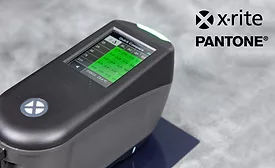Home » color measurement
Articles Tagged with ''color measurement''
advertisement
Actionable Color Measurement Tool for Special Effect Coatings
April 27, 2020
Keep the info flowing with our eNewsletters!
Get the latest industry updates tailored your way.
JOIN TODAY!Copyright ©2025. All Rights Reserved BNP Media.
Design, CMS, Hosting & Web Development :: ePublishing










